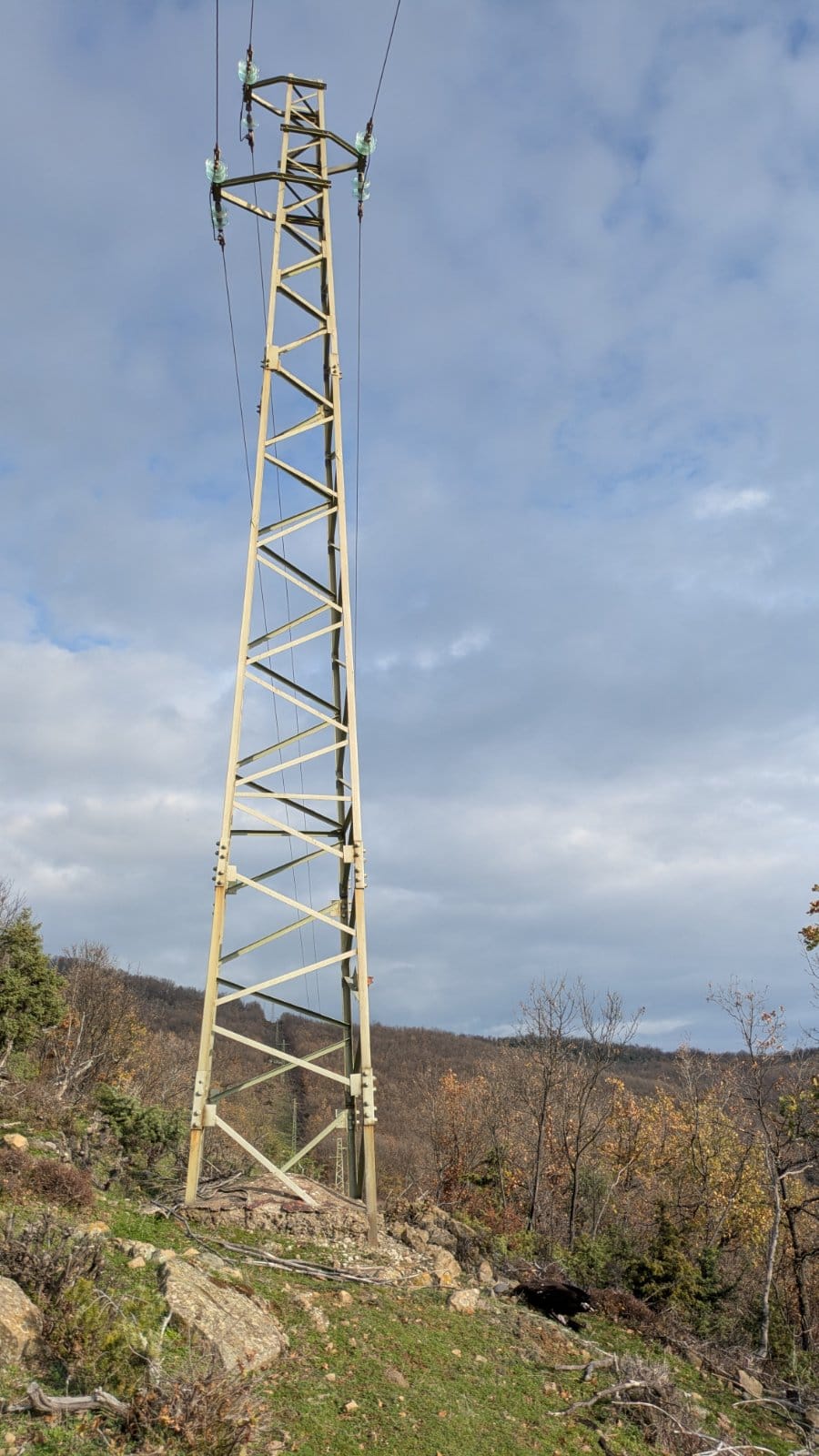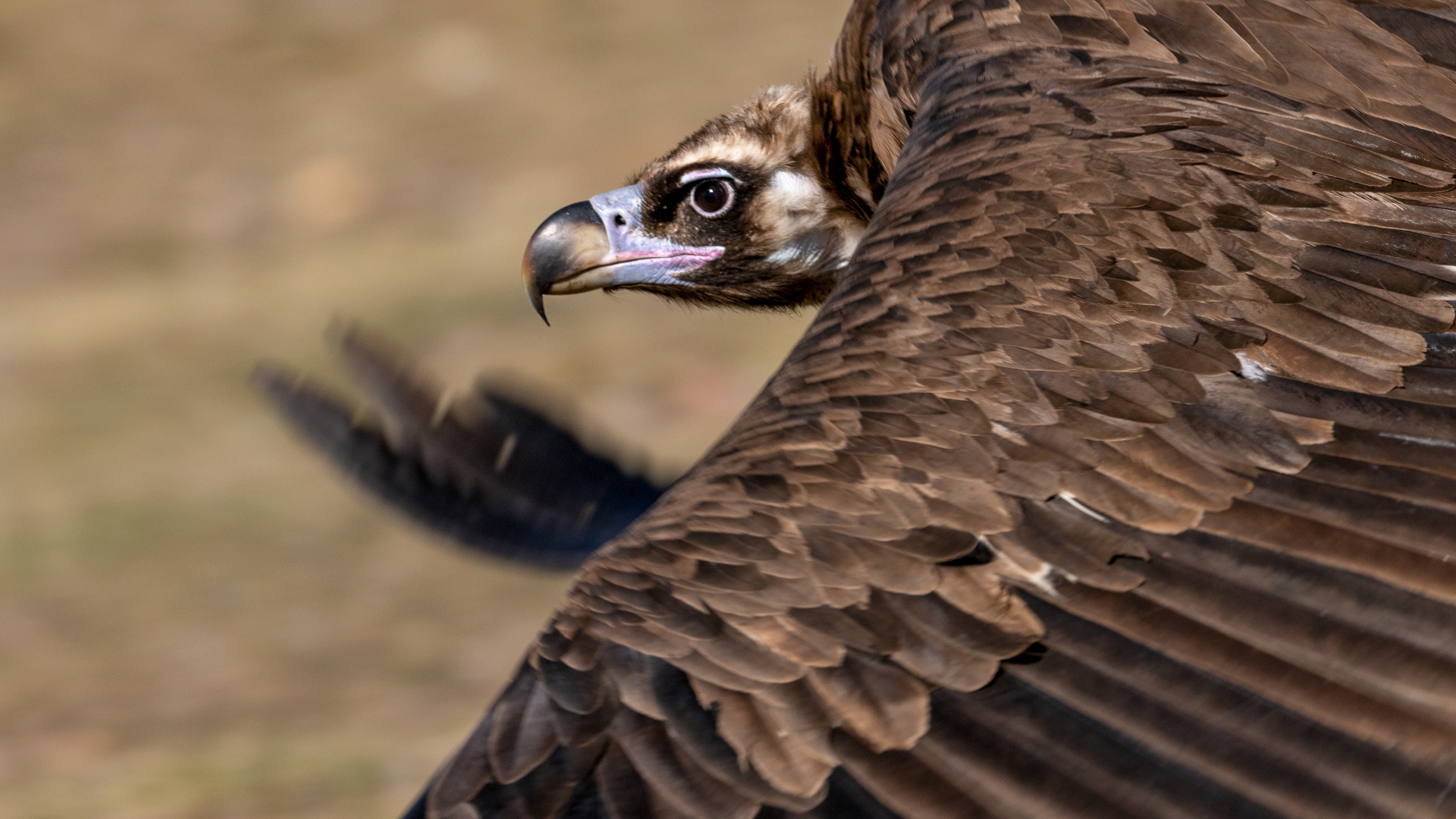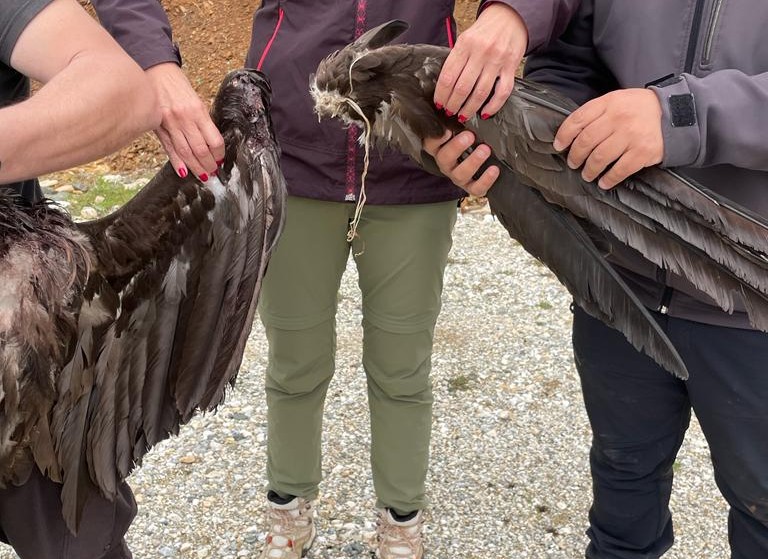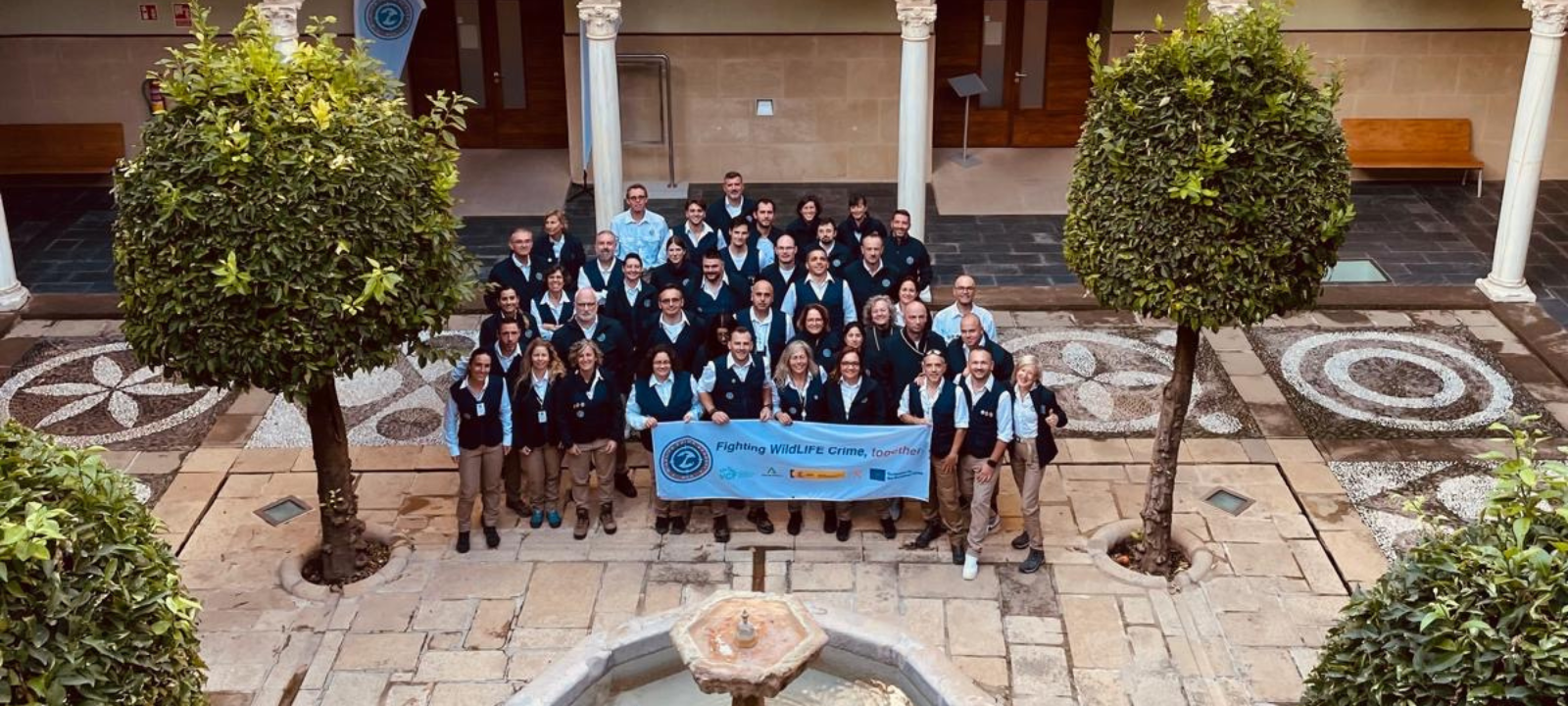The soft release programme in LIFE Aegypius Return brings hope for the recovery of the Portugal’s most fragile colony.
Six Cinereous Vultures (Aegypius monachus) were returned to the wild on 24 October in the Douro International Nature Park (PNDI). These birds, which had been rescued from the wild in a weak situation and rehabilitated, were at the acclimatisation station located in the PNDI, where they underwent a process of adaptation and loyalty to the territory – a pioneering measure in Portugal, known as soft release, implemented by the LIFE Aegypius Return project.
The aim is to recover the country’s most fragile and isolated colony, which was severely affected by the great fires of last August.
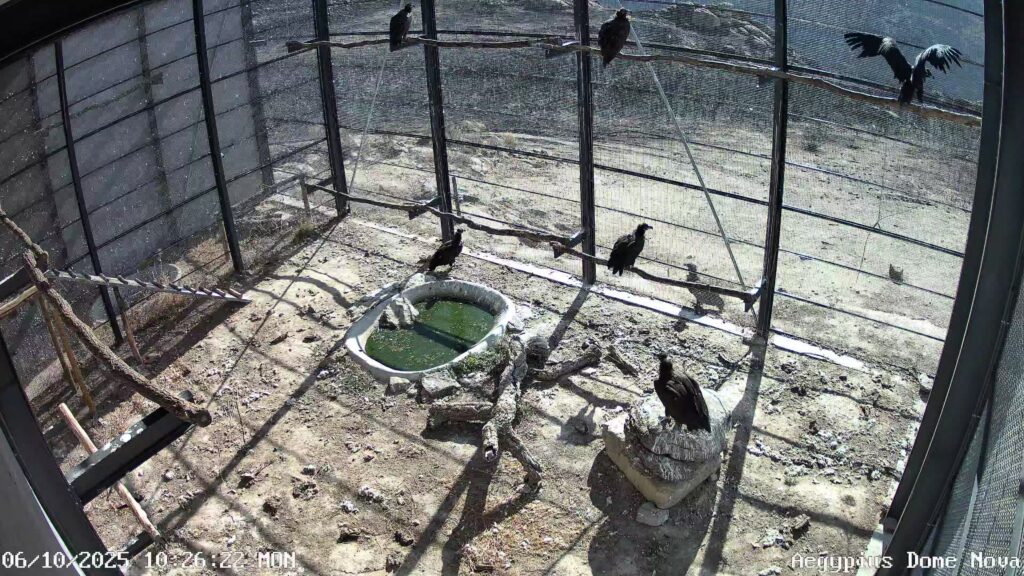
Acclimatisation after the fires
The acclimatisation station was opened at an event organised by Palombar – Conservation of Nature and Rural Heritage, a partner NGO in LIFE Aegypius Return. In attendance were representatives from Faia Brava – Nature Conservation Association, also a partner in the project, the Centre for Environmental Interpretation and Animal Recovery (CIARA), the Centre for the Recovery of Wild Animals at the Veterinary Hospital of the University of Trás-os-Montes and Alto Douro (CRAS HV-UTAD), União de Freguesias de Fornos e Lagoaça, as well as students from Agrupamento de Escolas Guerra Junqueiro (Freixo de Espada à Cinta) and members of the local community.
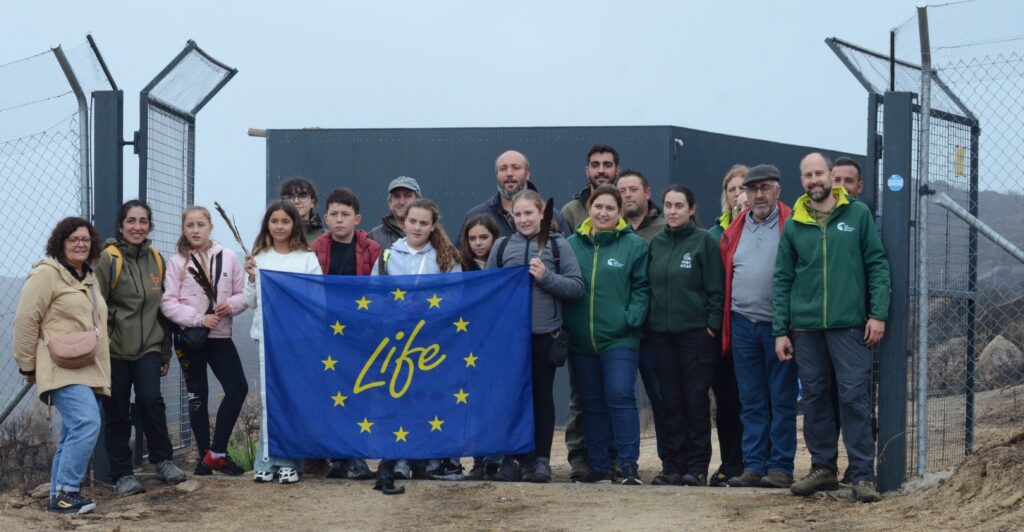
Palombar is responsible for the soft release programme and has led the return to freedom of six immature Cinereous Vultures – four males and two females – in a territory that still bears the scars of the great fire of August, which killed at least two chicks, destroyed six nests and several conservation infrastructures. The fire even threatened the acclimatisation station itself, forcing the temporary removal of the birds and the creation of an emergency plan to guarantee the continuity of conservation efforts.
Thanks to the strong public response to the appeal launched by Palombar and the project partners, it was possible to resume protection actions for this endangered species.
The release of these six individuals marks a crucial step in strengthening the transboundary Douro International colony, the smallest and most vulnerable in Portugal.
Continue supporting this endangered species. Reaching the campaign goal is essential for the next phase of conservation measures.
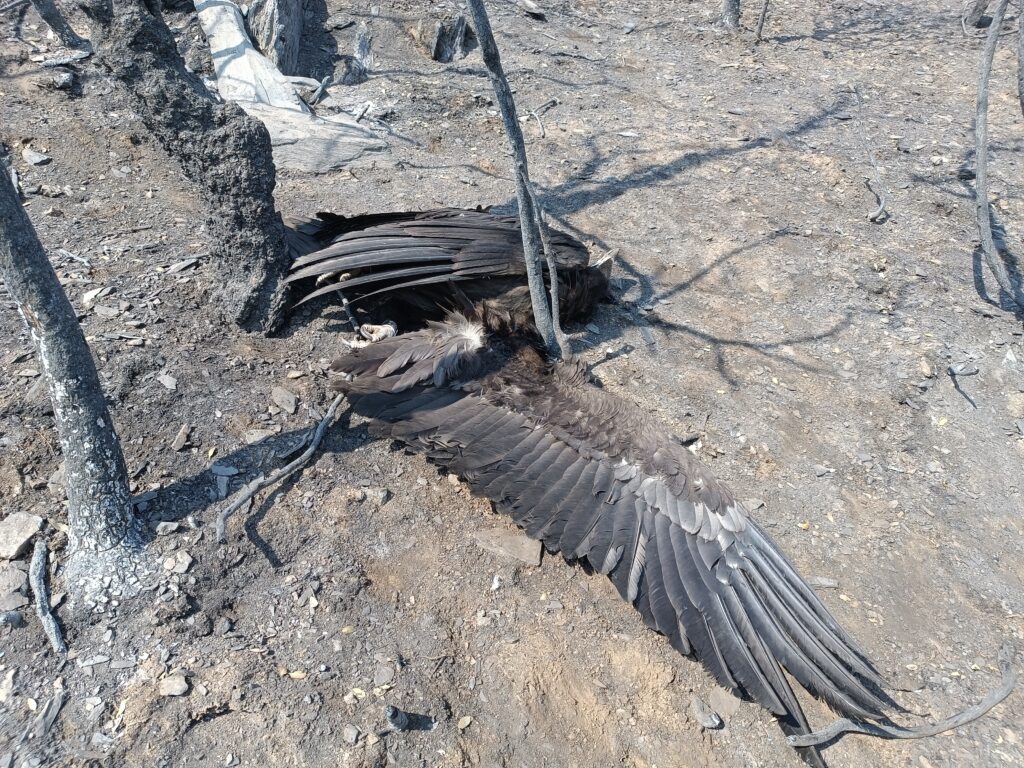
Where did the soft-released Cinereous Vultures come from?
A six Cinereous Vultures now returned to the wild had been found weakened or malnourished in the wild, in different parts of Portugal: Vidigueira, Cadaval, Ponte de Sor, Porto, Alqueva and Armação de Pera. They were rescued and rehabilitated at various centres: CRAS HV-UTAD and CIARA, the Centre for the Study and Recovery of Wild Animals (CERAS), the Centre for the Reception and Recovery of Wild Animals (CARAS), the Gaia Biological Park (CRF-PBG) and the Montejunto Wild Animal Recovery Centre (CRASM).
After rehabilitation, they were transferred to the acclimatisation station located in the municipality of Freixo de Espada à Cinta, on a Faia Brava property, in March this year.
Upon arrival – and again when they were relocated after the August fire – the vultures were thoroughly examined by veterinarians from CRAS-HV-UTAD.
Each bird was ringed and equipped with GPS/GSM transmitters, allowing continuous and remote monitoring of their movements and adaptation.
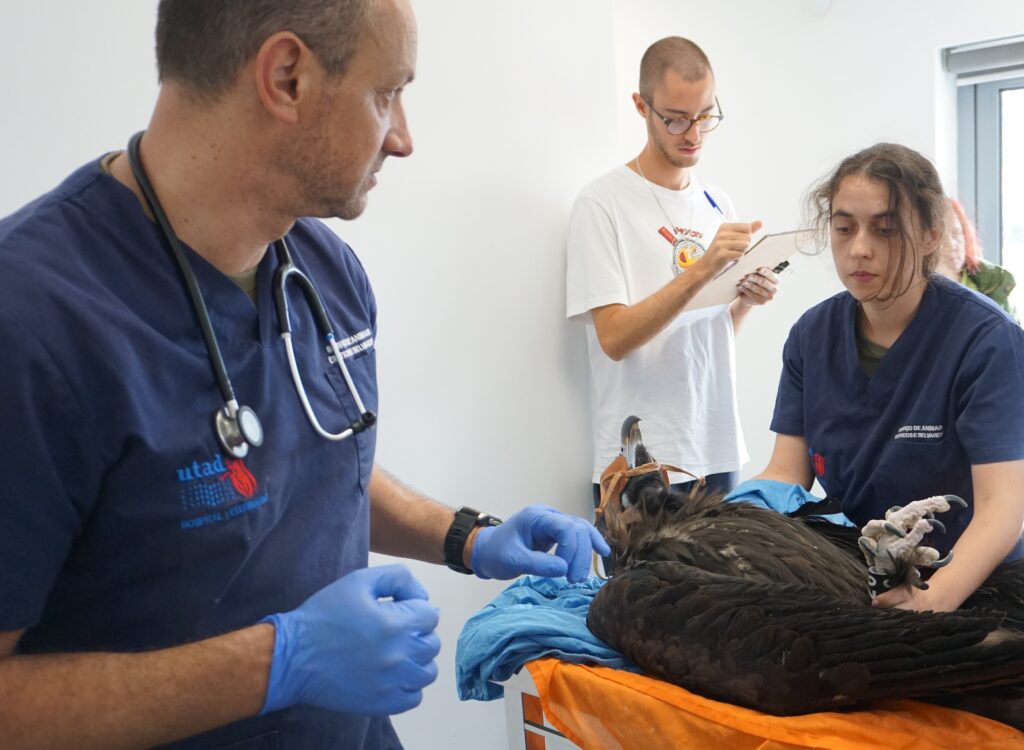
Students give the vultures names inspired by local heritage
On 14 and 21 October, Palombar carried out environmental education sessions with 6th-grade students from the Guerra Junqueiro School Group in Freixo de Espada à Cinta.
The sessions explored the ecological role of scavenger birds, the threats they face, and the conservation work carried out under LIFE Aegypius Return.
During the second session, students met the Cinereous Vultures in acclimatisation and took part in fun, creative activities to choose their names.
The students’ enthusiasm and participation helped foster a deeper connection with the species and a sense of belonging to the local natural heritage.
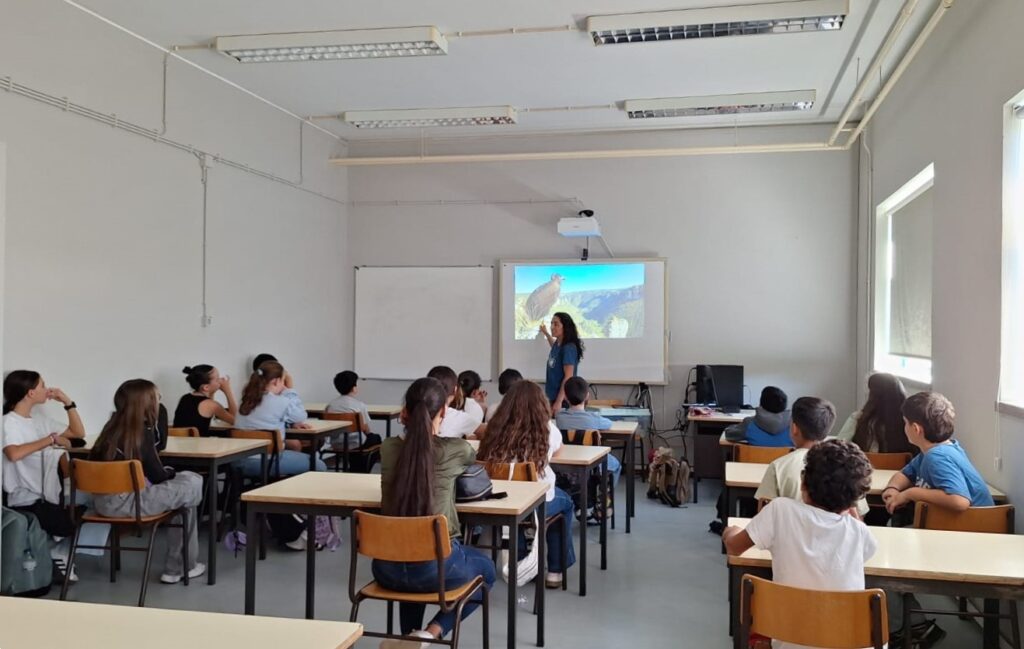
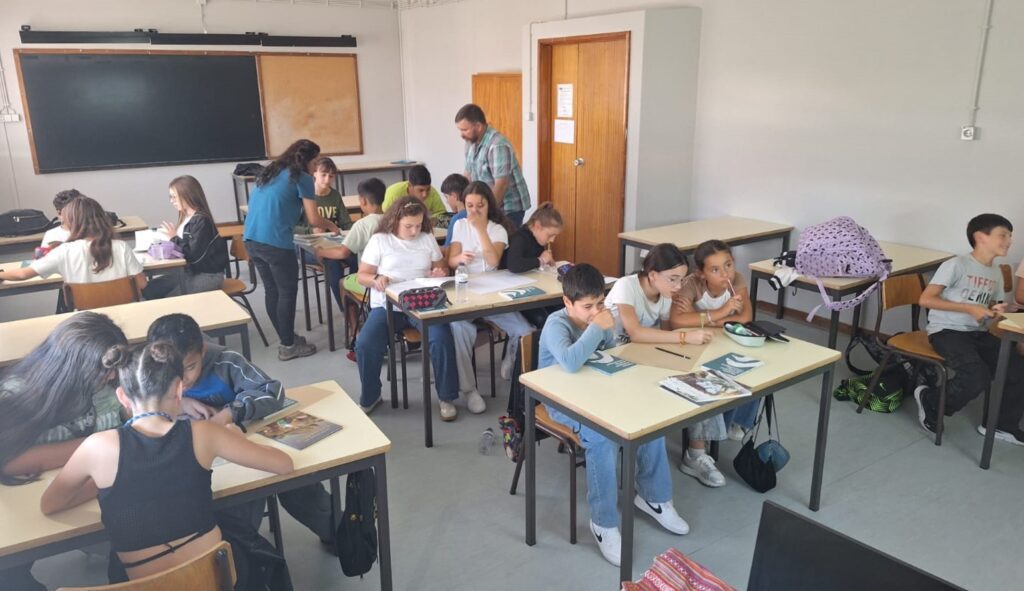
The names of the Cinereous Vultures
The names chosen by the students generally honour the area and the landscape, referring to toponymy and local biodiversity. All the names start with the letter B, to mark the second year of the soft release programme.
Find out about each name and the reason given by the students for their choice:
Baga (Berry)– “We chose Baga because it’s a fruit. Although vultures don’t eat berries, they are important because they clean the environment and prevent disease.”
Bétula (Birch) – “We chose Bétula because it’s an element of nature and a beautiful name.”
Bolacha (Biscuit) – “We wanted a sweet name because we love the vultures and don’t want them to disappear. We want to give a good impression of them so there are more vultures on Earth.”
Branco (White) – “Initially, we chose Chicken (Frango) because it looks like a chicken, so it seemed like the right name. But as it had to start with B, we adapted the name to Branco.”
Brisa (Breeze) – “Because vultures need a warm breeze to take flight.”
Bruçó – “It’s a village near Mogadouro, with many historical monuments, the River Douro, and big trees where vultures nest.”
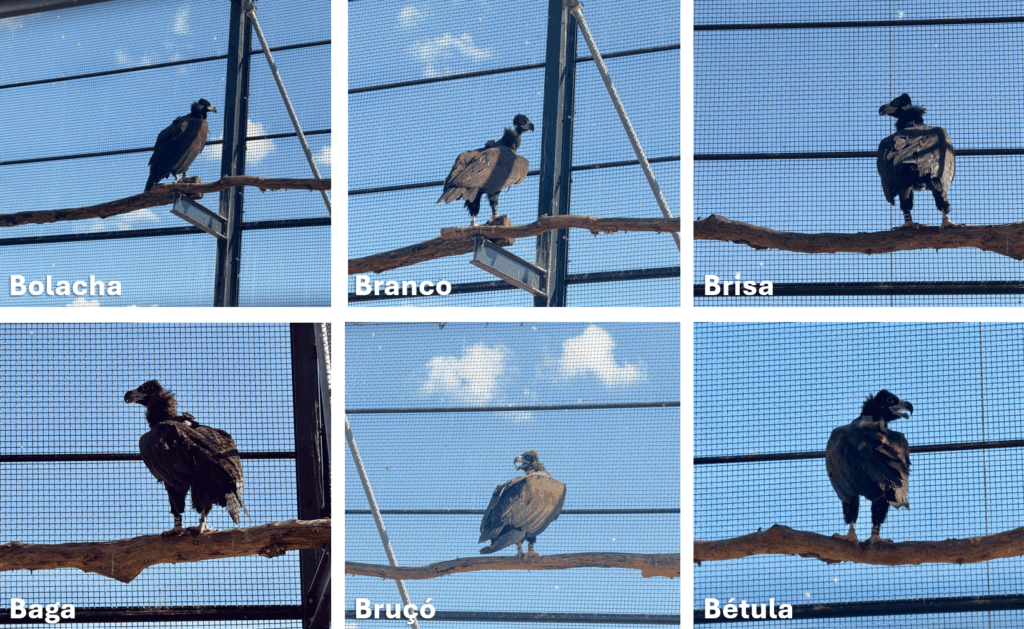
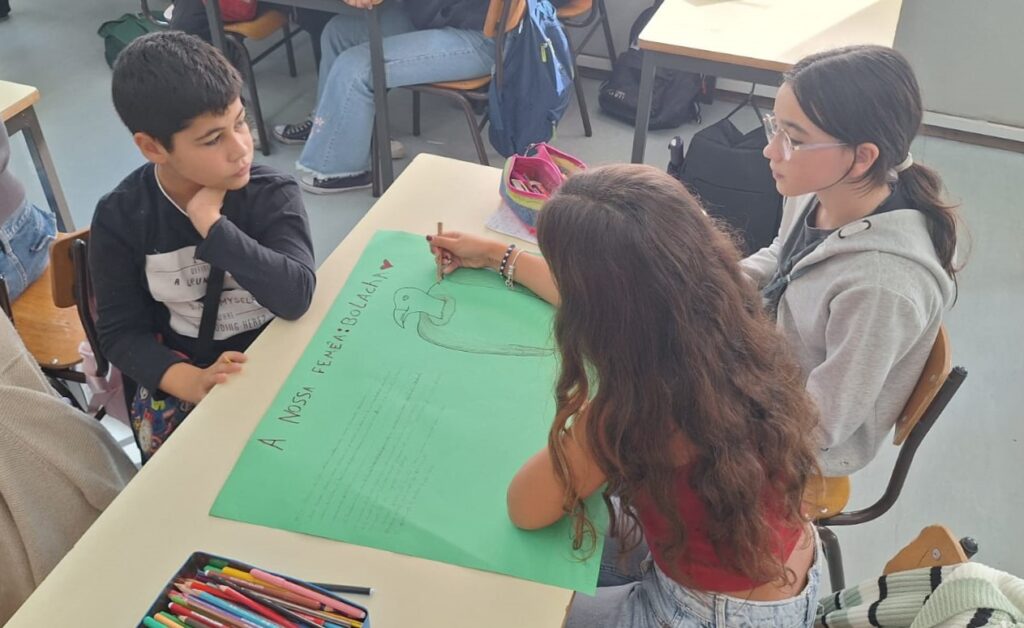
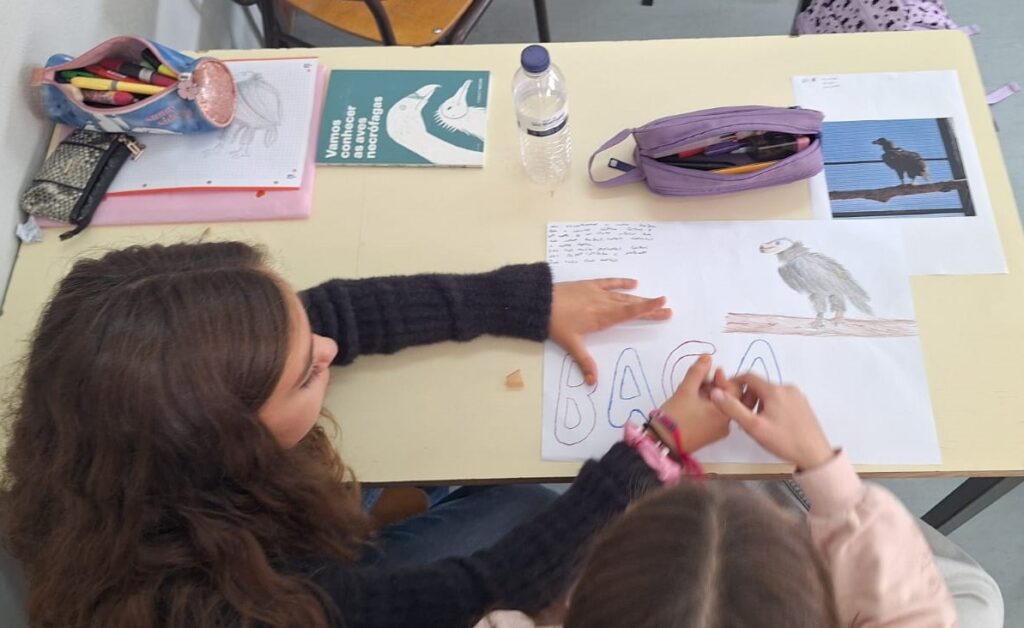
Shared freedom
Six students from the two classes took part in the opening of the acclimatisation station.
Taking turns, each had the unique chance to turn the crank that opens the aviary, allowing the vultures to fly free – a moving moment witnessed up close (though hidden from the birds to avoid disturbance).
Together, they opened the “door” that returned the Cinereous Vultures to the skies of the Douro International Nature Park.
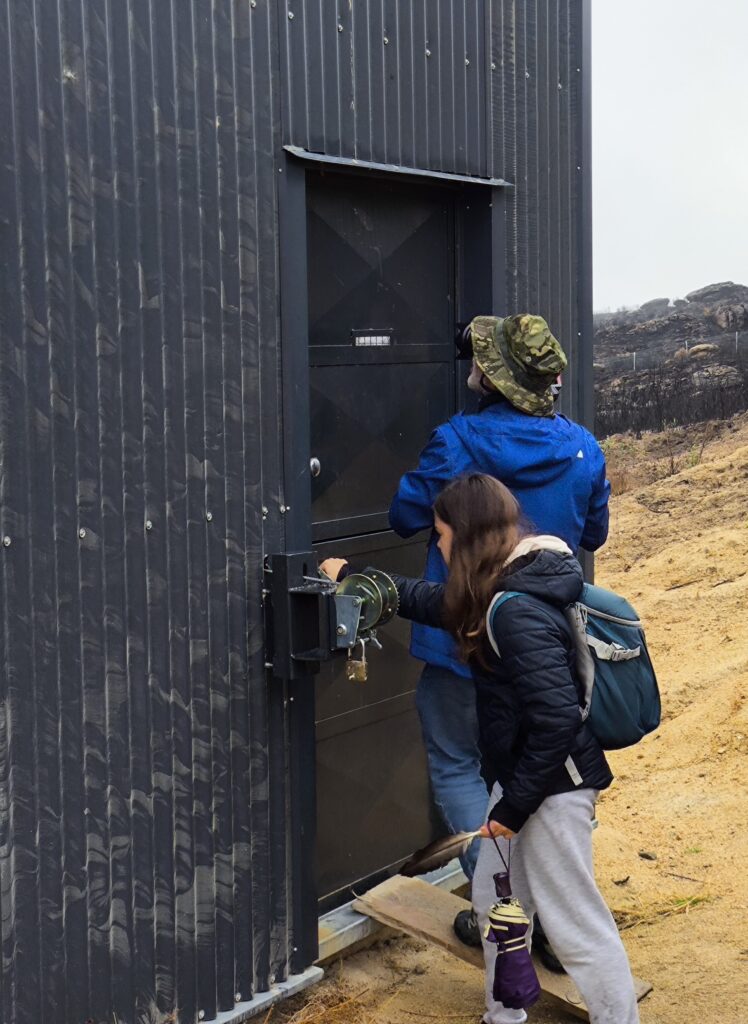
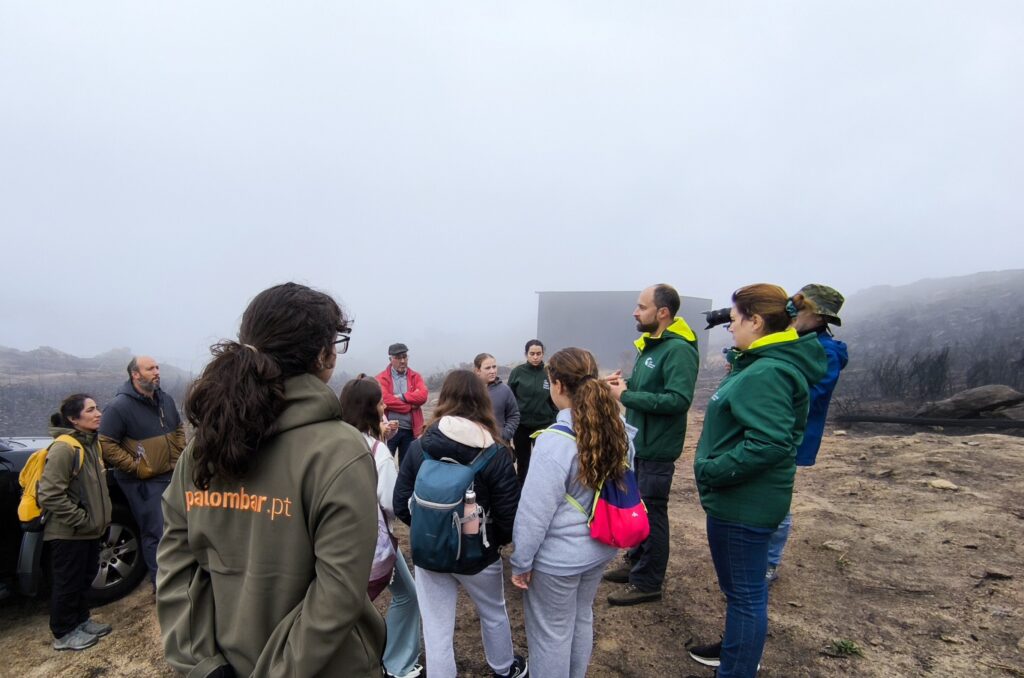
The start of a new journey
With the aviary open, one by one, the Cinereous Vultures took off. Some were welcomed by a flock of curious Griffon Vultures (Gyps fulvus) that were near the aviary, as if greeting them home.
They explored the surroundings and the adjacent feeding station for scavenger birds, gradually readapting to life in the wild.
It is hoped that they will settle and breed in the Douro region, strengthening this delicate cross-border colony. These birds bring new hope for the future of the species in Portugal.
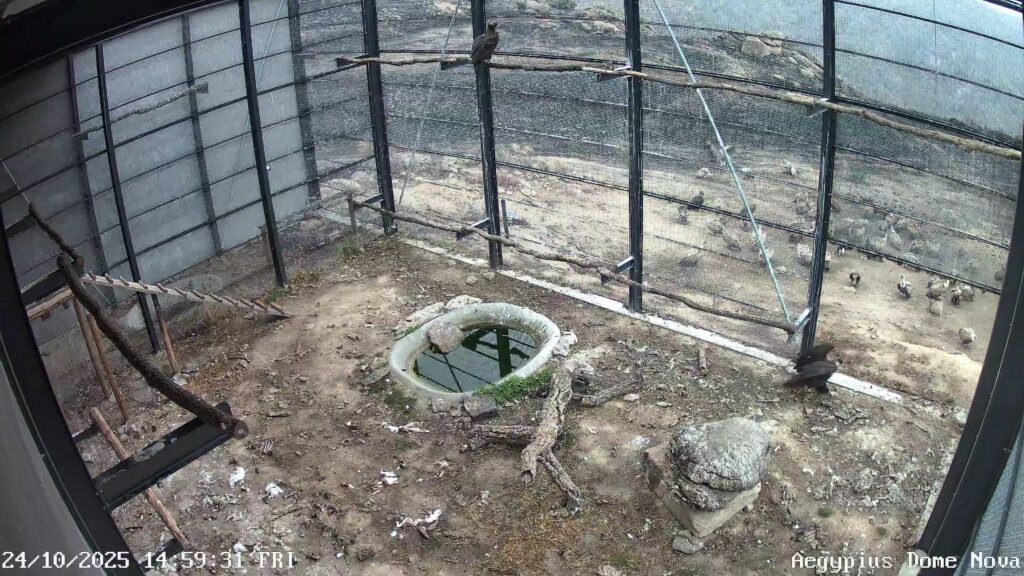
Over the next months, LIFE Aegypius Return partners will monitor the movements and behaviour of these birds using GPS/GSM transmitters and field observations to assess the success of their integration into the territory. Since their release, they have remained faithful to the Douro valley.
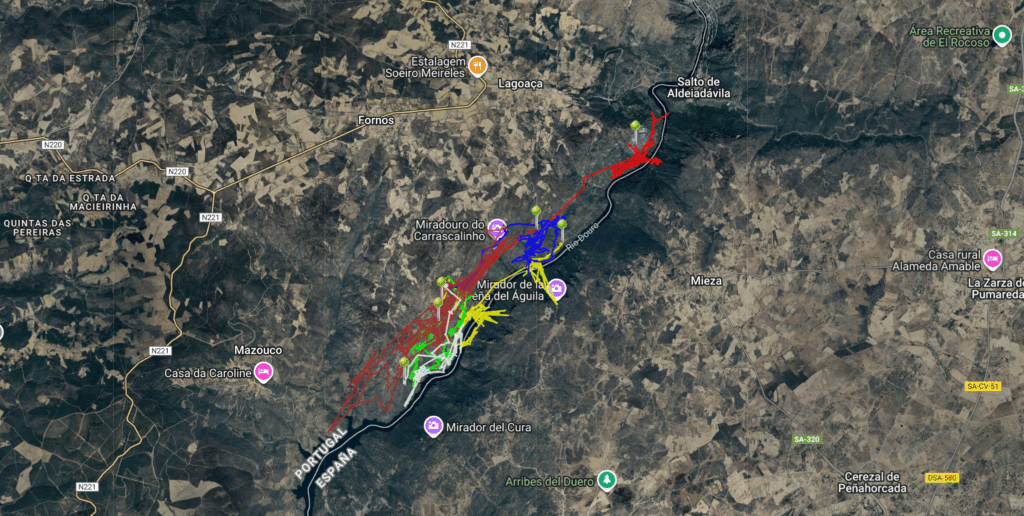
On 24 October, at the same location, three juvenile Griffon Vultures were also returned to the wild. They had also been found weakened in the wild and were rehabilitated at CRAS HV-UTAD. The Griffon Vultures were ringed by the Palombar team as part of the Sentinelas project – Threat Monitoring Network for Wild Fauna.
About LIFE Aegypius Return

O projeto LIFE Aegypius Return é cofinanciado pelo programa LIFE da União Europeia.O seu sucesso depende do envolvimento de todos os stakeholders relevantes, e da colaboração dos parceiros: a stakeholders, and the collaboration of the partners: the Vulture Conservation Foundation (VCF)beneficiário coordenador, e os parceiros locais Palombar – Conservação da Natureza e do Património Rural, Herdade da Contenda, Sociedade Portuguesa para o Estudo das Aves, Liga para a Protecção da Natureza, Associação Transumância e Natureza, Fundación Naturaleza y Hombre, Guarda Nacional Republicana e Associação Nacional de Proprietários Rurais Gestão Cinegética e Biodiversidade.

